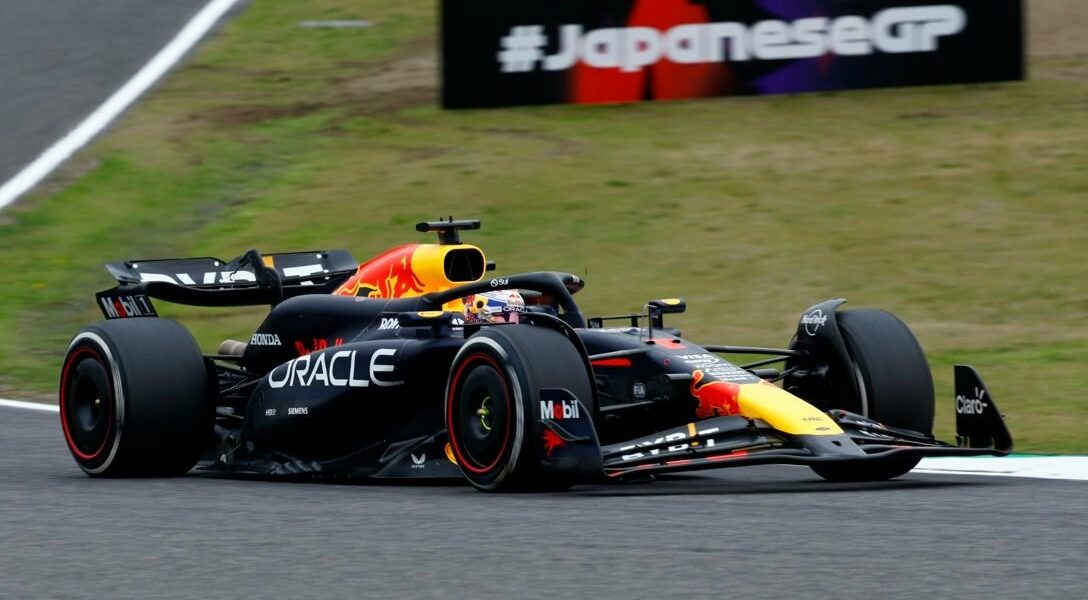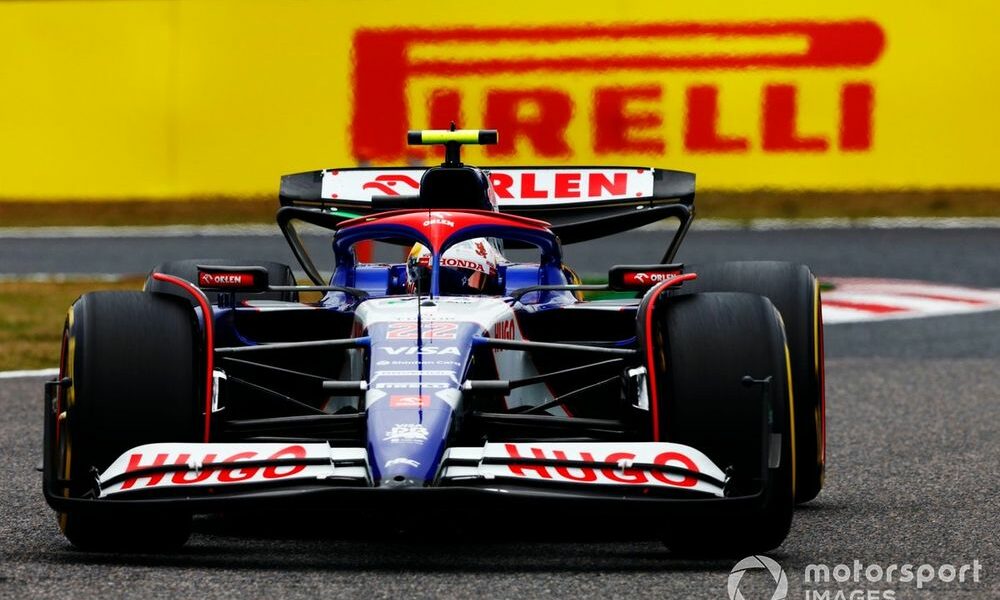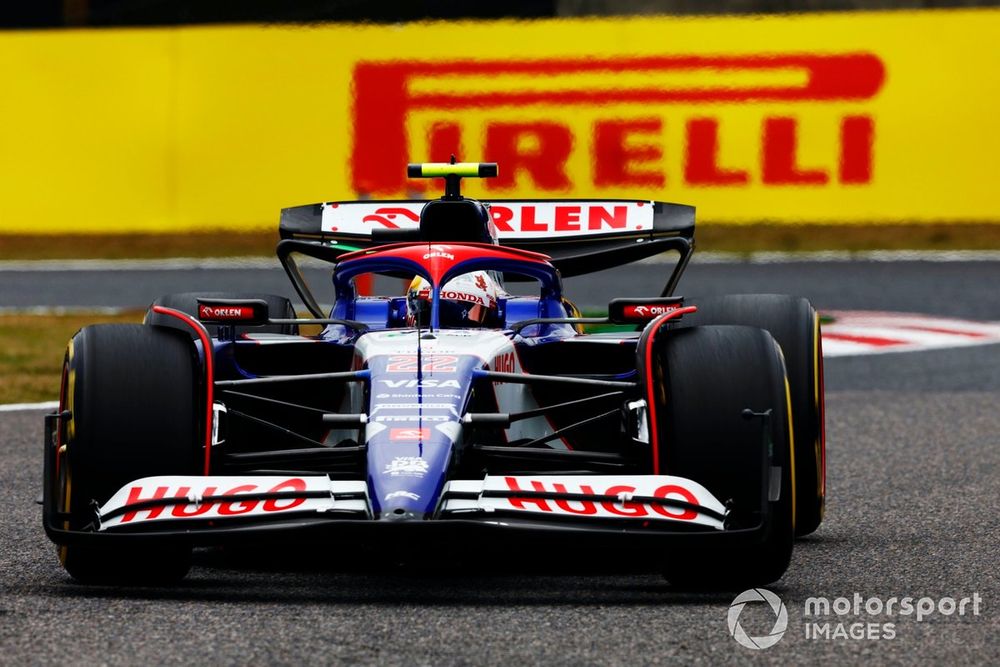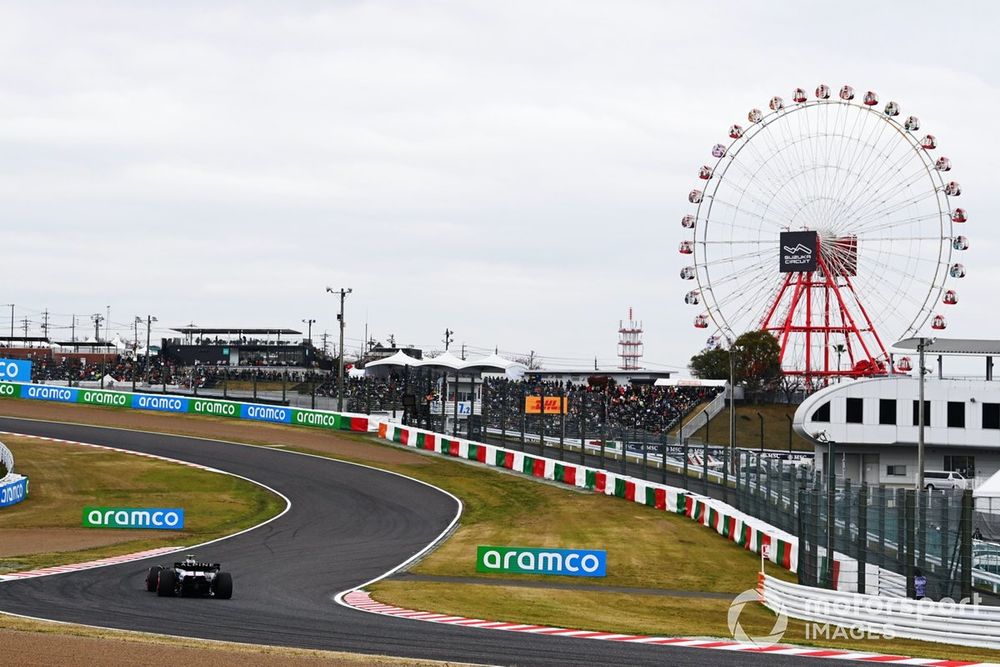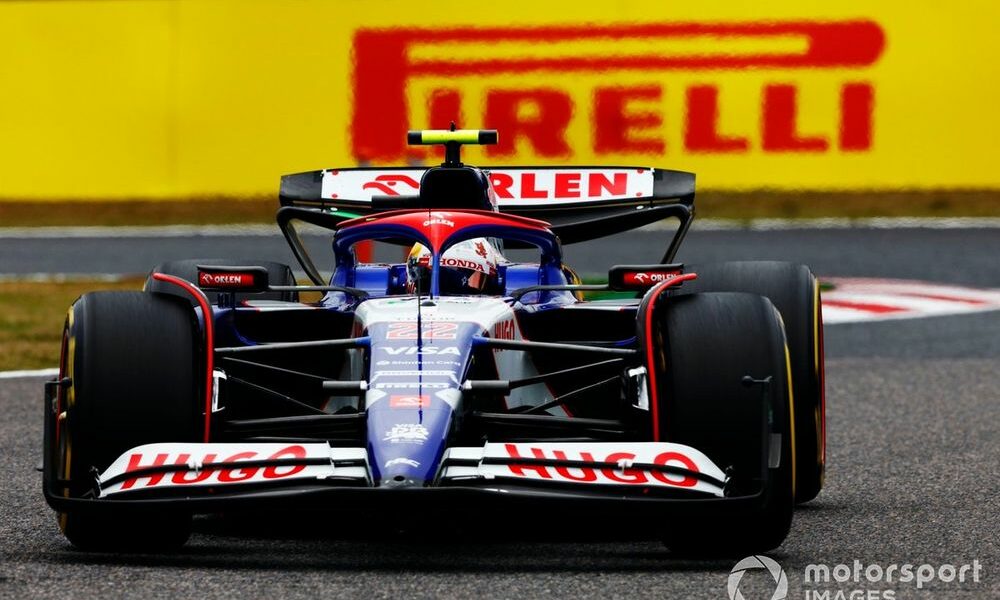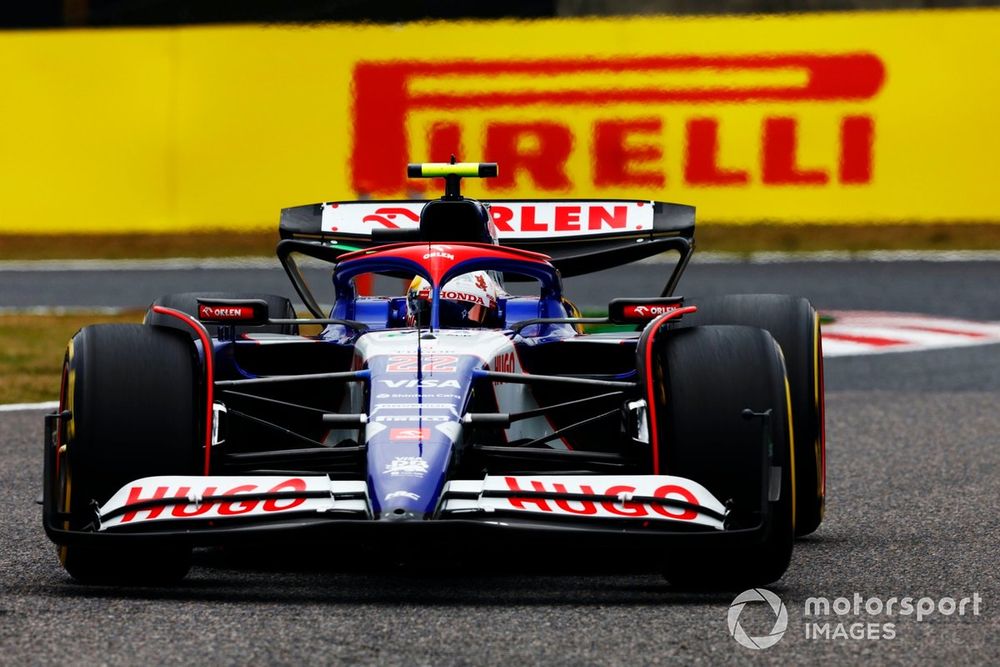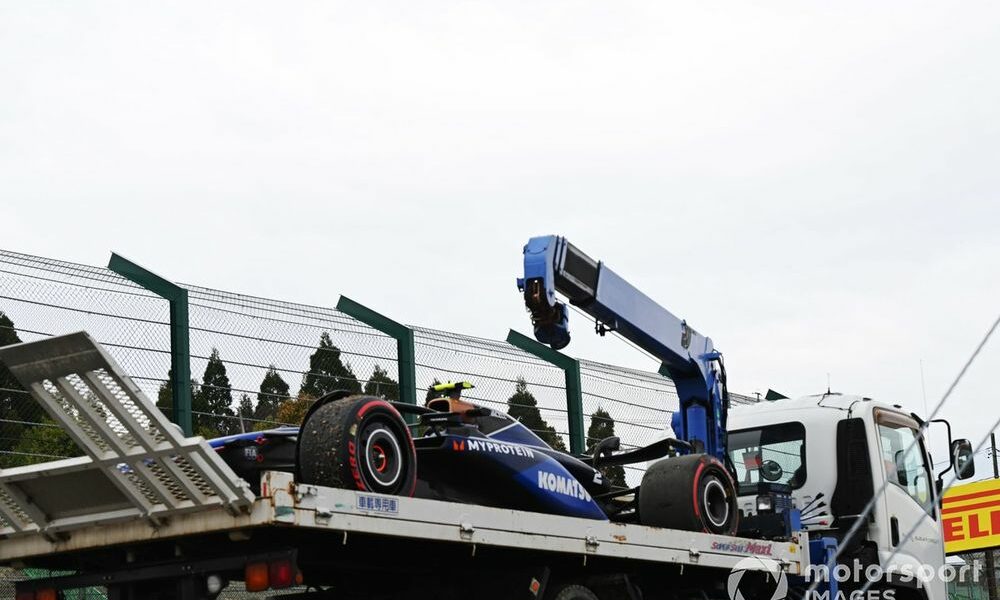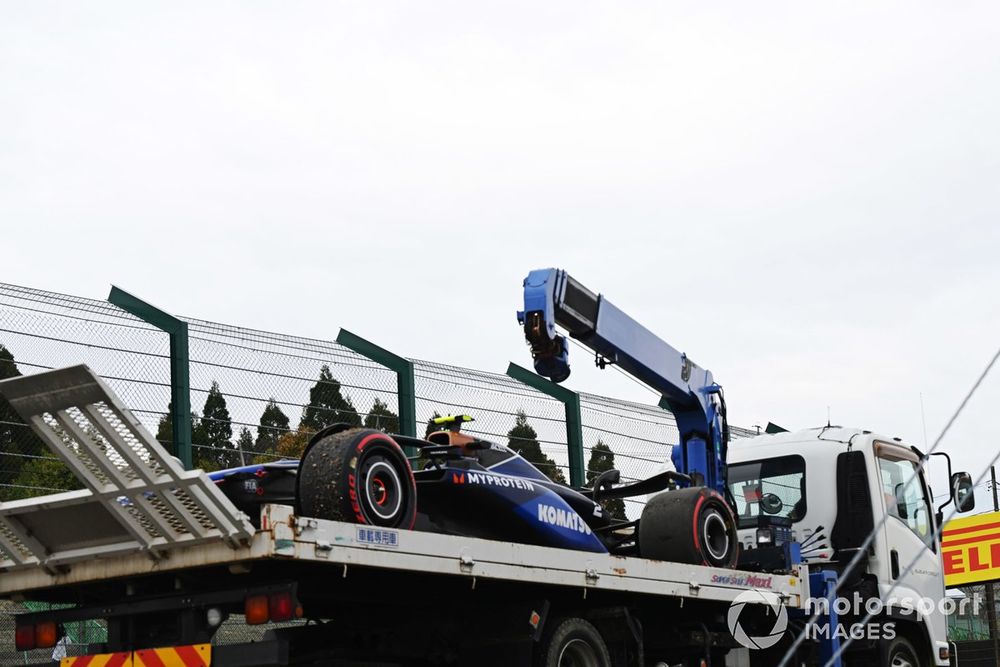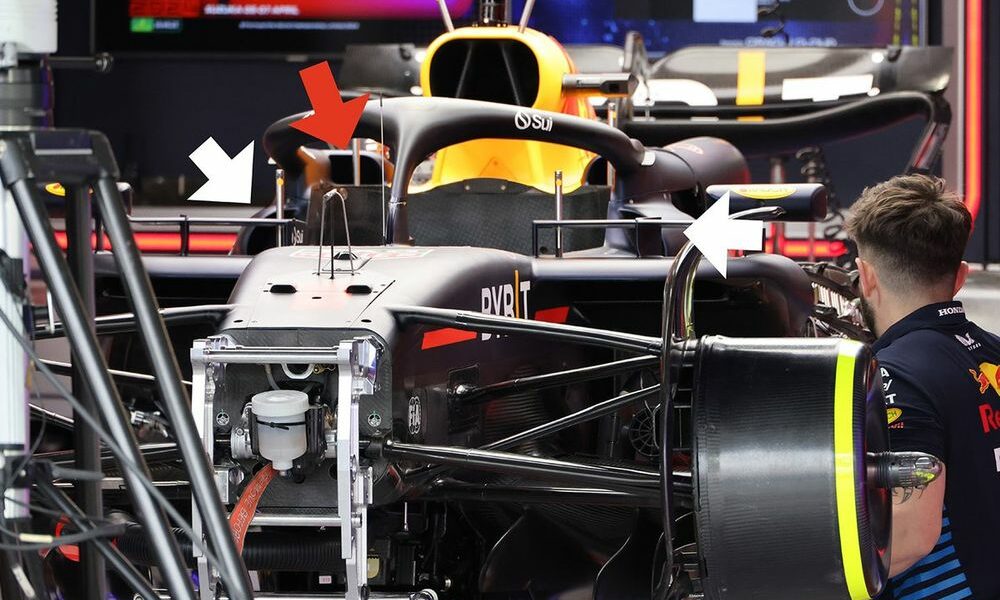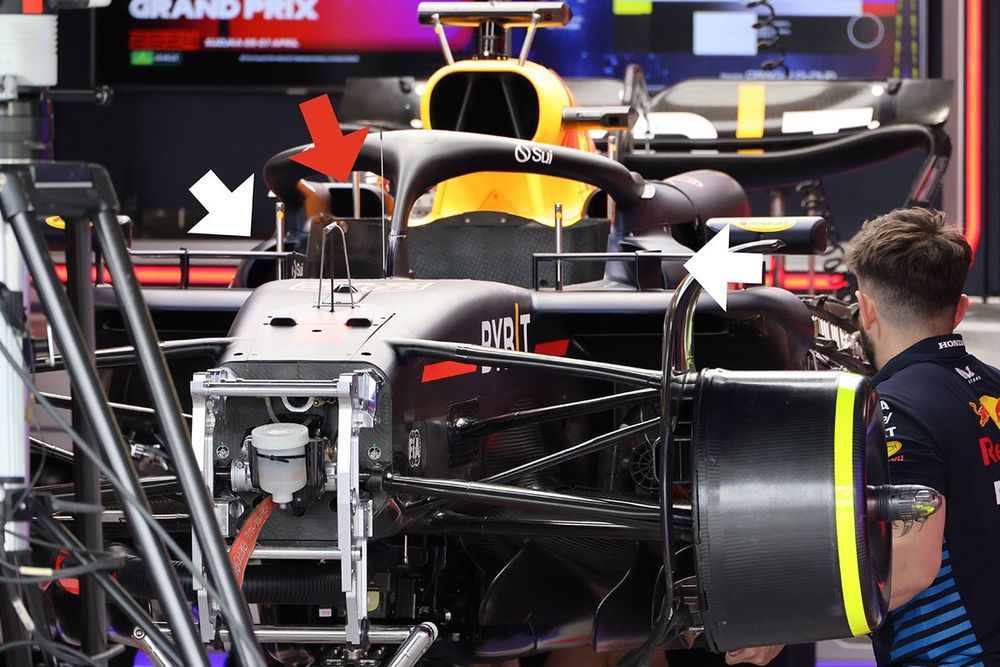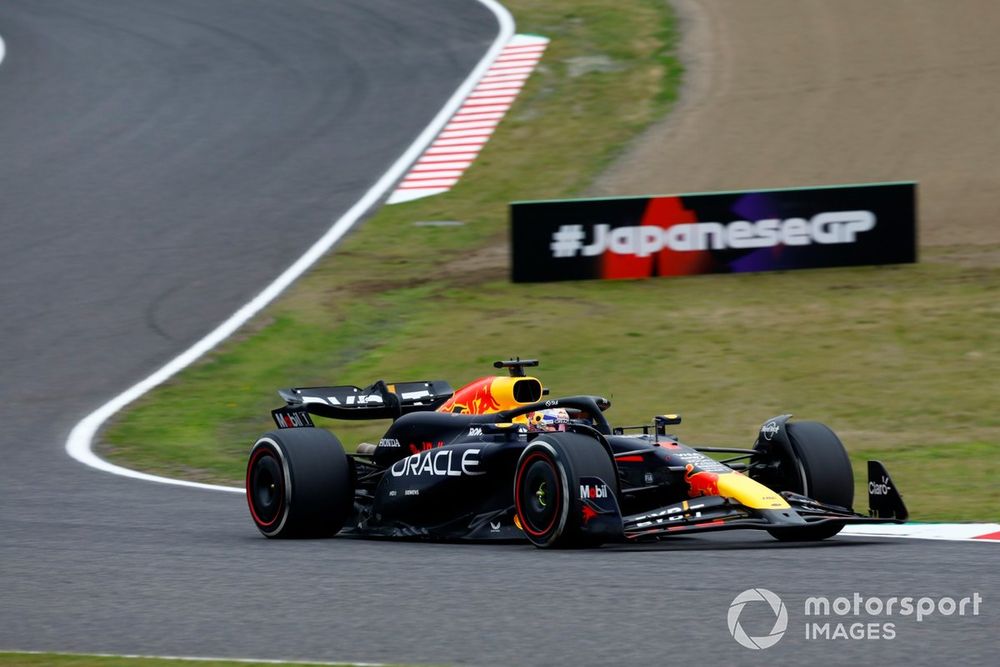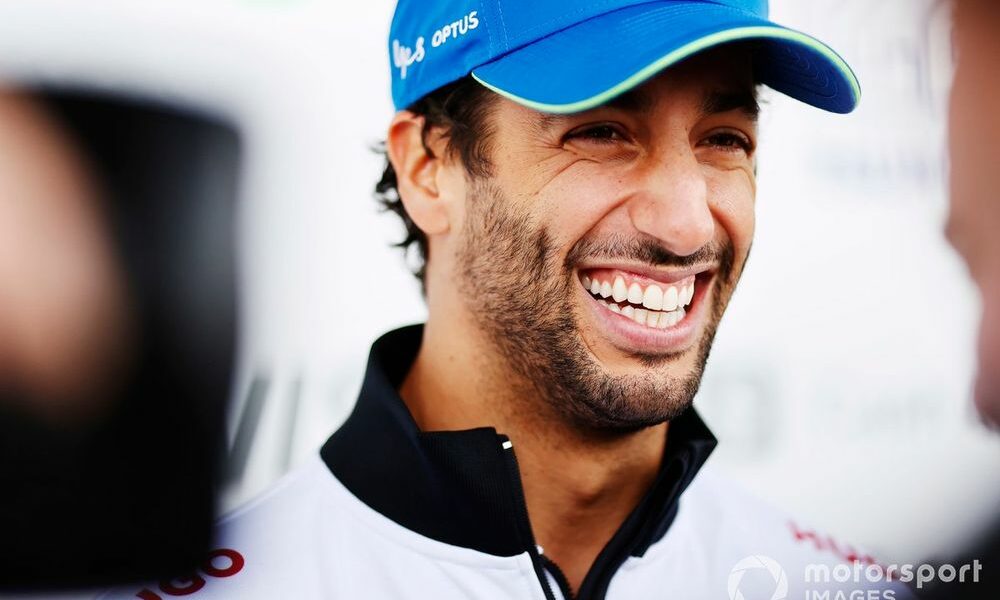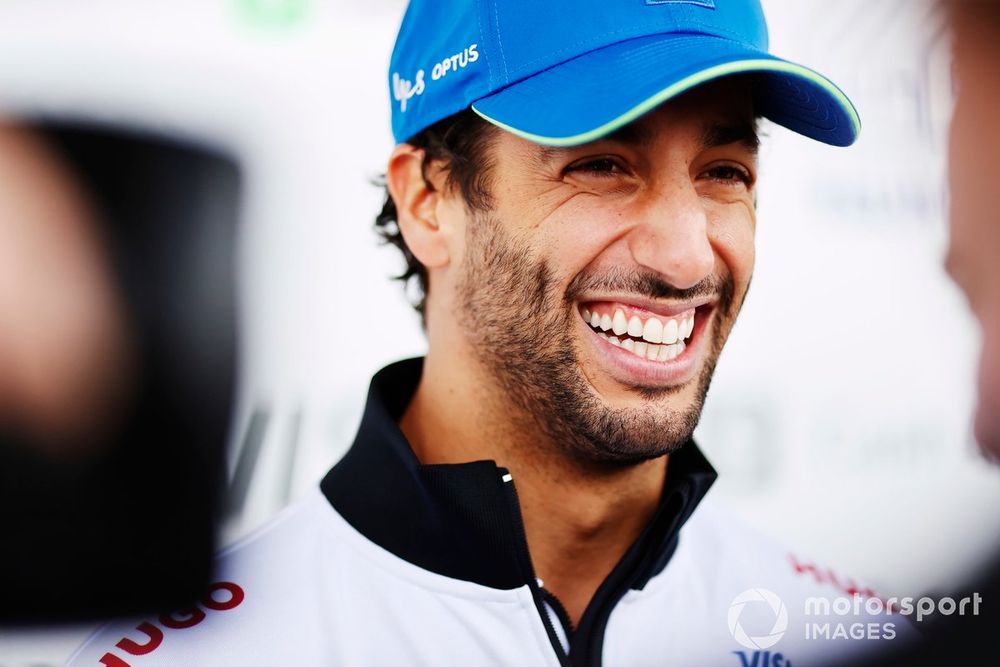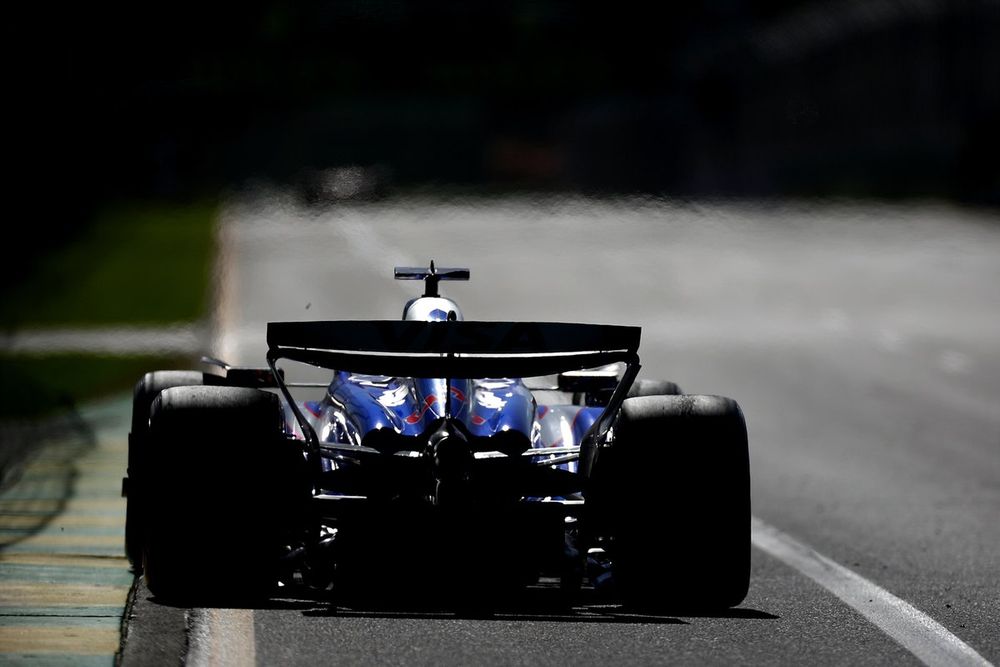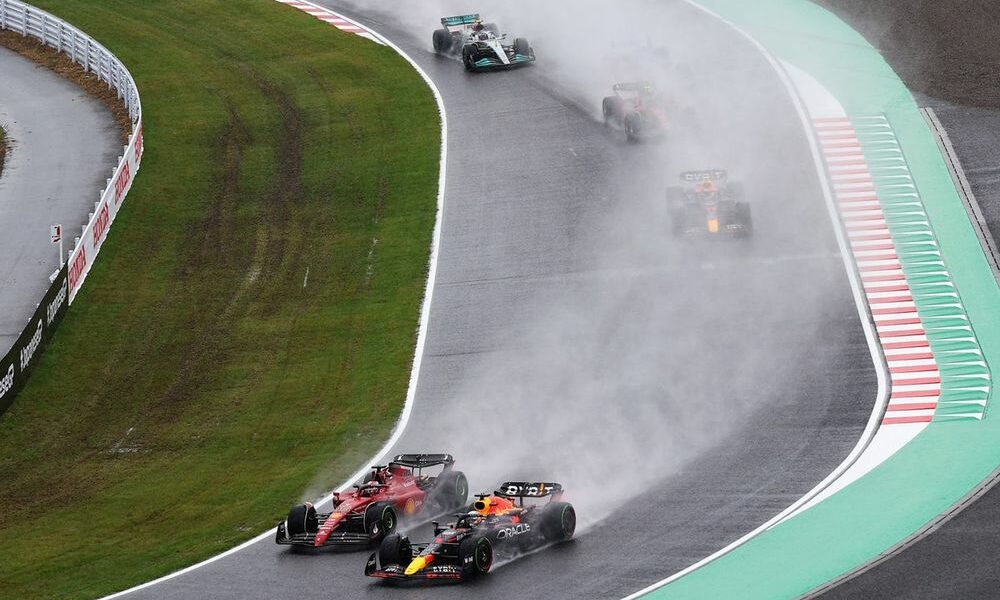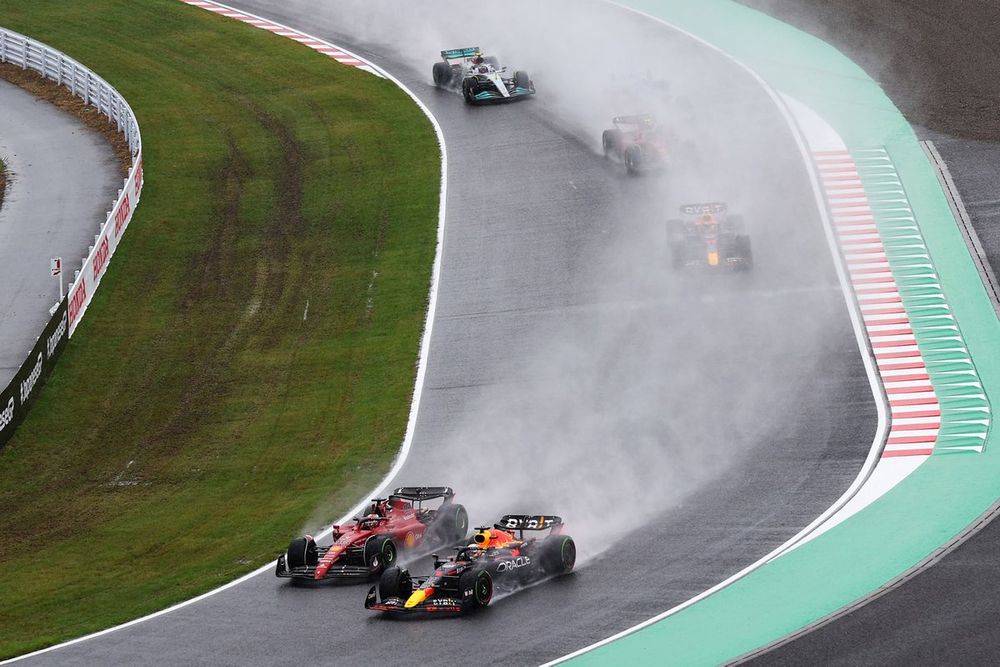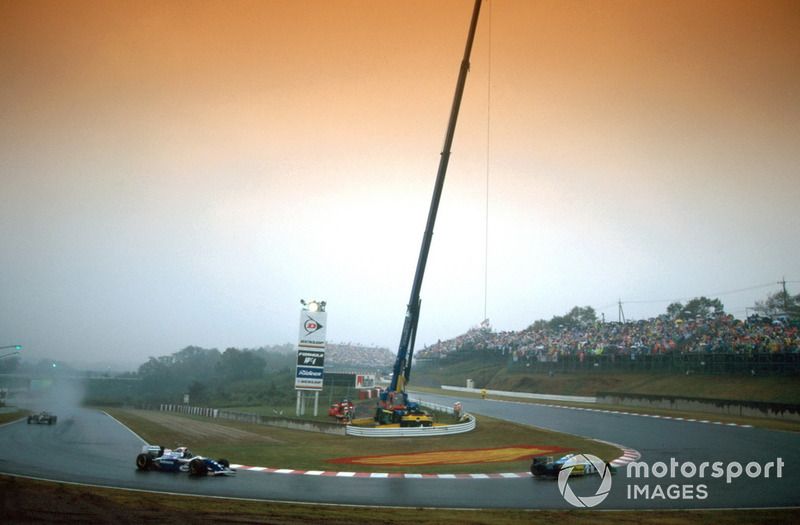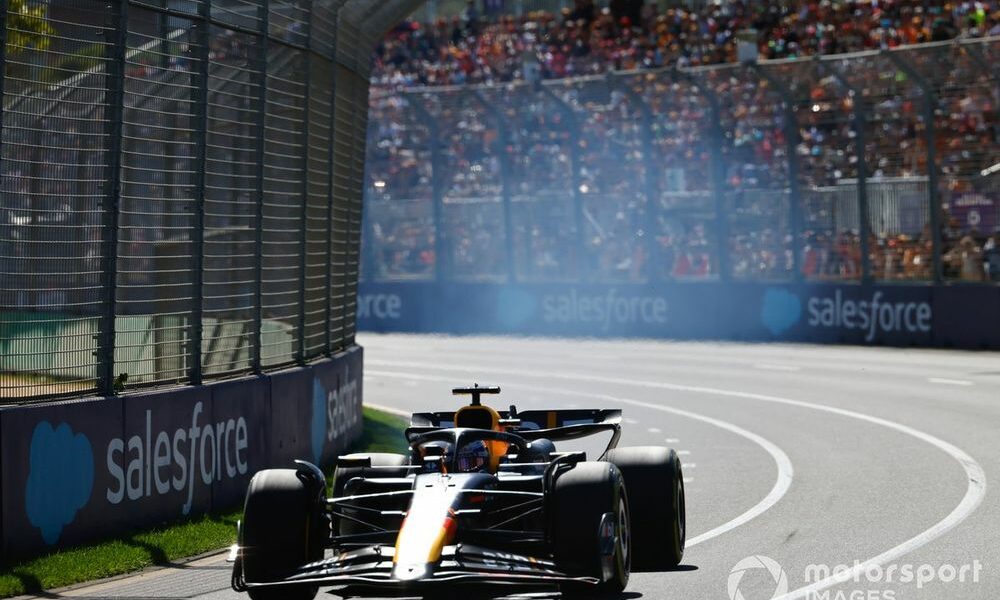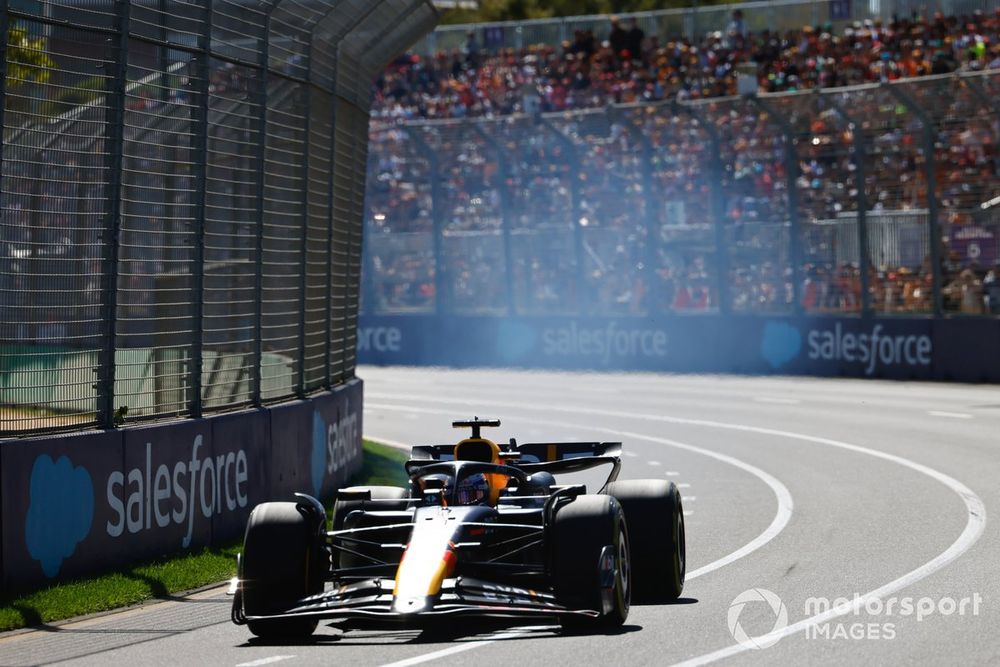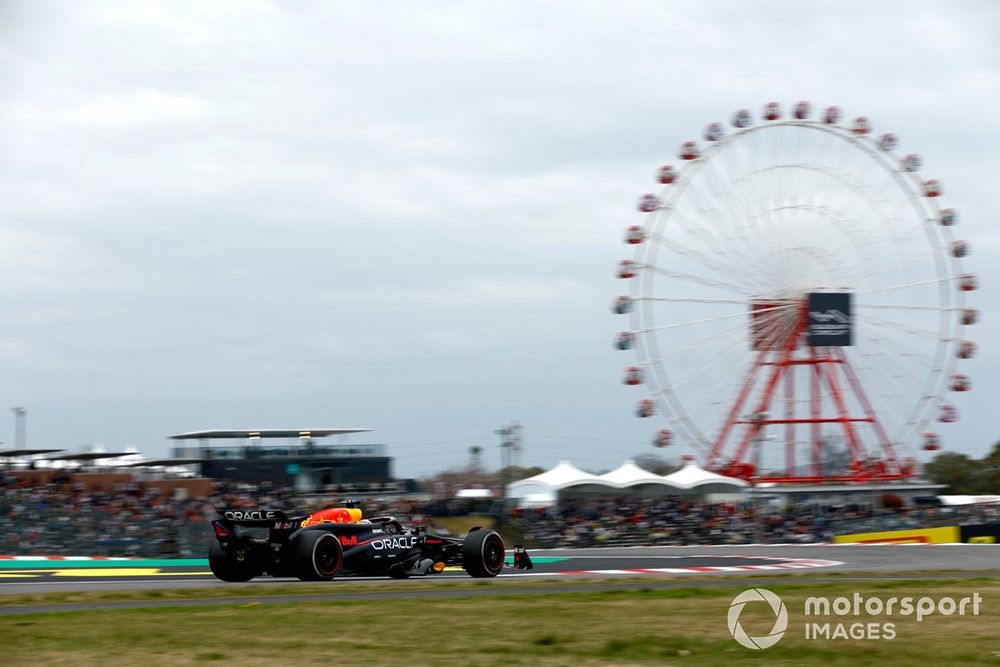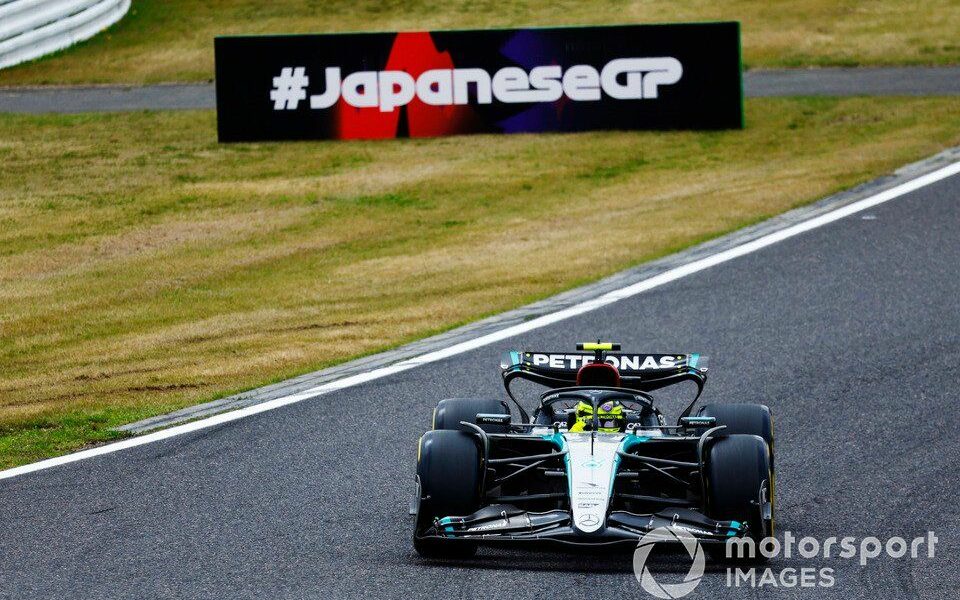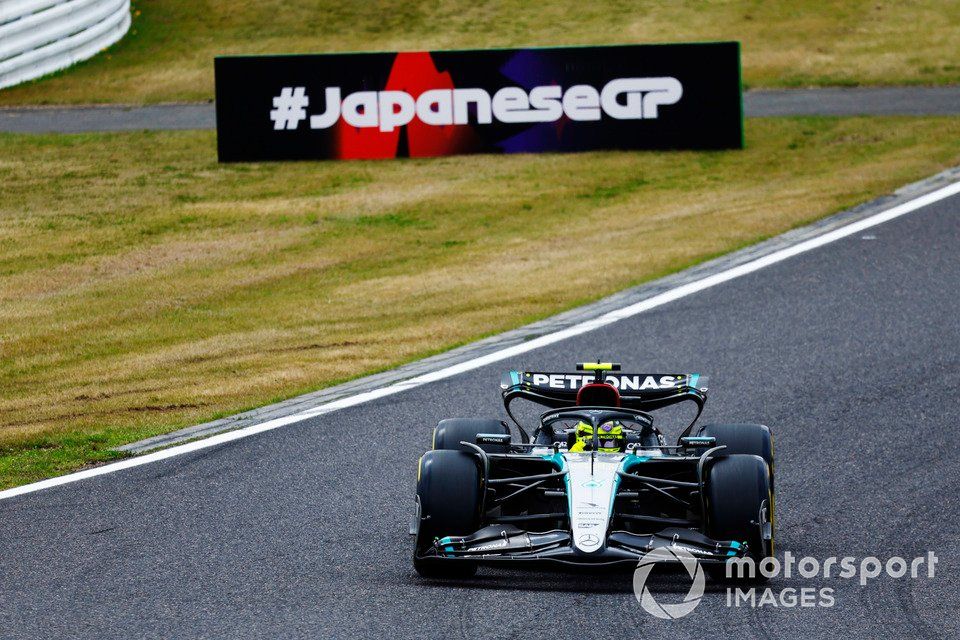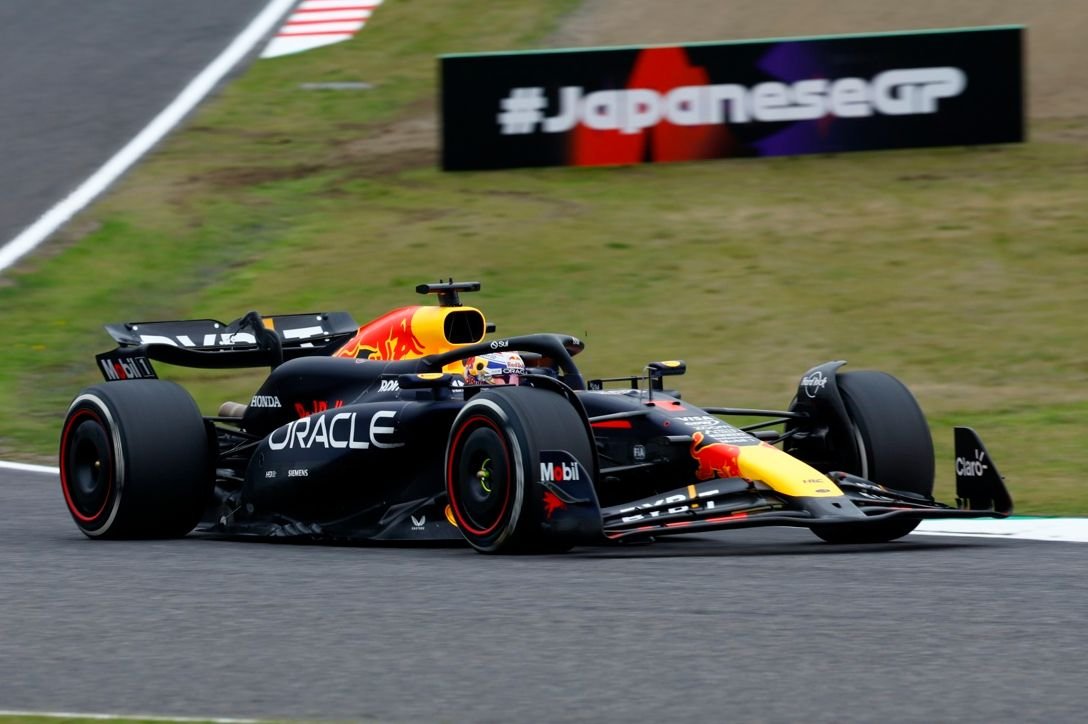
Verstappen was fastest in Free Practice 1, lapping in 1m30.056s, while FP2 was blighted by rain showers. That was topped by McLaren’s Oscar Piastri, with a quickest time of 1m34.725s.
Japanese GP FP1 results: Verstappen fastest from Perez
What happened in Japanese GP Free Practice 1?
Lewis Hamilton had just sent the quickest time on soft tyres of 1m30.543s in his Mercedes when Logan Sargeant lost control of his Williams at the final element of The Esses, known as the Dunlop Curve, and his car slammed into the tyre wall.
Sargeant, who was using the repaired chassis that team-mate Alex Albon crashed in Melbourne, was unhurt.
After a lengthy break to clear the track, the session resumed with Verstappen immediately setting a faster time of 1m30.056s, 0.181s quicker than team-mate Perez. Ferrari’s Australian GP winner Carlos Sainz was third fastest on 1m30.269s, three tenths ahead of George Russell’s Mercedes.
With rain in the forecast, teams were keen to get a long run on soft tyres, which meant further improvements weren’t forthcoming. Charles Leclerc ended the session in sixth, half a second off the pace, behind Hamilton but ahead of Fernando Alonso (Aston Martin) and Oscar Piastri (McLaren).
Local hero Yuki Tsunoda was ninth fastest for RB, ahead of the second McLaren of Lando Norris.
Japanese GP FP2 results: Piastri fastest from Hamilton
What happened in Japanese GP Free Practice 2?
Rain showers caused a frustrating lack of running in FP2, with Hamilton and RB’s Daniel Ricciardo – who missed FP1 in favour of Red Bull junior Ayumu Iwasa – emerging after 15 minutes on slicks, only for it to sprinkle some more and send them pitwards.
Piastri sparked a small flurry of cars running on intermediates just before the halfway point. Tsunoda set the first flying lap time, a 1m42.304s, which he lowered to 1m40.946s, just under a second faster than team-mate Ricciardo.
For most of the session it was too wet for slicks and too dry for any serious running on inters, but Piastri ran again towards the end, this time on slicks, and worked down to 1m34.725s.
Hamilton also had a go, lapping half a second off the pace, with Leclerc going third fastest, ahead of inter runners Tsunoda and Ricciardo.
Norris and Sainz were sixth and seventh with unrepresentative times.

